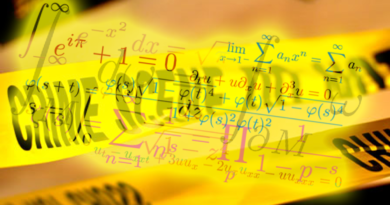Unsolvable Enigmas
Mathematicians love brain cracking enigmas that can keep them busy for a long time, especially because the feeling when finally solving such a complicated puzzle is just such an amazing one. Now, you might think that you are a very bright econometrician, gifted with an impeccable brain, which I am not denying, but the probability that you will solve the problems described in this new series is pretty much equal to the determinant of a singular matrix. I present you with a problem that has yet to be solved: Riemann’s Hypothesis.
These problems, known as the Millennium Problems, are very interesting to solve. I dare to say it is one of the most difficult ways to get rich, that is to earn one million dollars. The Clay Mathematics Institute has established seven problems that they stated to be Prize Problems. These enigmas were, amongst others, meant to stress the importance of a solution to these problems and that the solution will most probably have a historical impact. To anyone that is able to solve any of the puzzles a one million dollar prize is presented. Presently, only one of the Millennium problems has been solved. The problem in question is the Poincaré Conjecture, solved by Grigoriy Perelman in 2002. Unbelievably, he actually turned down the one million dollar prize and has been famous for that ever since.
Riemann’s Zeta Function
We all know that prime numbers are an interesting and useful phenomenon. It is however not known yet how many prime numbers there are up to some specified limit. What Bernhard Riemann thought of in 1859 was that the frequency of prime numbers can be approximated by a certain function, as their behavior seemed to be related. This led to the famous problem that is perceived to be the most difficult of the remaining six enigmas. The function that I present you with is the Riemann Zeta Function, which is given by:![]()
where may be any real number greater than 1. One can easily check this, since filling in s = 1 in the Zeta Function yields a divergent series. There may actually be other singularities of this function, but so far is the only one found yet. In the critical strip, which is the region in the complex plane for which the real part lies in between zero and one, the Riemann Zeta Function satisfies the following (functional) equation: ![]() If we assume that this equation holds outside the critical strip as well and let have a non-positive real part, then we can define
If we assume that this equation holds outside the critical strip as well and let have a non-positive real part, then we can define
![]() for all remaining non-zero complex numbers. In this case, we can find that the trivial zeros are the negative even integers, being, -2,-4,-6,… since then
for all remaining non-zero complex numbers. In this case, we can find that the trivial zeros are the negative even integers, being, -2,-4,-6,… since then
![]() equals zero. It is actually known that all non-trivial zeros are in the critical strip. The Riemann hypothesis then states that all non-trivial zeros of the Riemann Zeta Function have real part equal to 1/2. Stated differently, all of these non-trivial zeros lie on the line 1/2 + it, which is called the critical line.
equals zero. It is actually known that all non-trivial zeros are in the critical strip. The Riemann hypothesis then states that all non-trivial zeros of the Riemann Zeta Function have real part equal to 1/2. Stated differently, all of these non-trivial zeros lie on the line 1/2 + it, which is called the critical line.
Now that you have had an insight in your ultimate goal in life, I would like to wish you good luck in becoming the mastermind able to solve this mystery. Do not crack your brain too much on it though, as some of the world’s most esteemed mathematicians have tried to do the same, only leading to the enigma utterly baffling them. However, if you need something to do during your holidays besides enjoying the amazing weather and all sorts of amazing things, then perhaps you can glorify your name as the world’s greatest mathematician ever.
For further reading: www.claymath.org/millennium-problems
Text by: Mike Weltevrede




